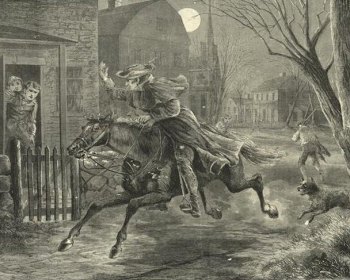The National Guard: Minutemen of another age

Many Ferguson residents became furious after learning that a police officer involved in the shooting an unarmed African-American teenager was not indicted in the case. In Ferguson, the Guard’s job is to help restore the peace.
Throughout the years, the National Guard has been activated for wars, national disasters such as hurricanes and tornadoes, civil unrest and more. It is a fast-action military force steeped in history.
Indeed, next month, the National Guard celebrates its 378th birthday. Colonists first organized citizens into a militia responsible for their defense on Dec. 13, 1636. That makes the Guard the oldest component of the armed forces.
In the early days, militiamen drilled once a week and even carried weapons to church, according to the Massachusetts National Guard website. They drilled less often – once a month – when threats lessened.
As relations with Great Britain soured, the colonials formed their own government. In 1774, the Committee of Public Safety ordered renewed militia training and created the minutemen, a force that could jump into action at a minute’s notice.
The first militia to take the name "National Guard," was in New York, according to the state's website. The 2nd Battalion, 2nd Regiment of Artillery, New York State Militia, adopted the name to honor Marquis de Lafayette during a visit by the Revolutionary War hero on July 14, 1825. The name harkened to Lafayette's Garde National de Paris.
Other militias have been called the National Guard since 1916. It’s too bad they didn’t stick with “minutemen.” Even so, the Army National Guard’s motto evokes the minutemen philosophy: Always ready, always there.
Here are some notable events during which presidents or governors called out the guard:
Sept. 24, 1957: President Dwight D. Eisenhower sent federal troops to Little Rock, Arkansas, as nine African-American students attempted to gain admission to Central High School, The New York Times reported.
Eisenhower had federalized the Arkansas National Guard and authorized the use of the Guard and regular federal forces in Little Rock.
Oct. 1, 1962: Federal troops and federalized units of the Mississippi National Guard quelled a 15-hour riot as James H. Meredith, an African-American, began classes at the University of Mississippi.
June 11, 1963: Gov. George Wallace had promised to “stand in the schoolhouse door” to prevent two African-Americans from enrolling at the University of Alabama. He stepped aside when confronted by federalized National Guard troops, according to The New York Times.
Instead of confronting Wallace by bringing the two students to the door, Deputy Attorney General Nicholas Katzenbach took them to their dormitories, the story said. This gave Wallace the “face-saving exit he apparently wanted.”
May 1970: For those of a certain age, the words “calling out the National Guard” call to mind the killing of four students at Kent State University in1970. But the Kent State incident was just one of three bloody protests that month. At Kent State, guardsmen shot students. In other incidents, local police shot protestors, and the Guard was called in to restore peace.
- Kent State, May 4, 1970: Events began to unravel May 1, when students protested the invasion of Cambodia. Ohio Gov. James Rhodes called the Guard to quell protests. On May 4, students gathered near the school's commons. Teargas was fired. There was a standoff that culminated with the guard firing 61 to 67 shots, according to Kent State’s website. Four students were killed, and nine were wounded. The matter of why troops fired into the crowd was argued then -- and is still argued now. Officials pointed to the troops’ fatigue and unpreparedness.
- Augusta, Georgia, May 11, 1970: The National Guard was called to duty by Gov. Lester Maddox after rioting erupted in Augusta in the wake of the beating death of a teenage boy who had been in police custody, according to a May 12, 1970, report. Police officers killed six African-Americans -- including three unarmed bystanders, according to The New York Times (May 17, 1970). At least 20 were wounded.
- Jackson State,Mississippi, May 14-15, 1970: While responding to a student protest, police shot at the students, killing two and wounding 12. Several months later, the commander of the Mississippi National Guard told the President's Commission on Campus Unrest that the police had violated an agreement to leave the campus the night of the shooting. The commander refused to say whether there would have been killings if the operation had been turned over to the military, according to The Baltimore Sun (Aug. 13, 1970).
April 29, 1992: The National Guard was called to curb violence after a Semi Valley jury acquitted three white Los Angeles police officers in the beating of Rodney King, an African-American motorist.
Related:

